Home > Company > Tire Safety > Choosing Tires > Determining Tire Size
Once you have determined it’s time to buy tires, you’ll need to know what size tires are correct for your vehicle. Depending on what you drive, you may be interested in how to find the right tire for your…
This information is usually inside your car’s doorjamb, in your owner’s manual. To ensure your current tire or a replacement tire you may be looking at matches your vehicle’s requirements, it will be good for you to understand how tire sizing works. You may have never paid attention to the string of numbers and letters on every tire, but it’s a gold mine of information.
If you’re unsure of how to read tire measurements from your tire walls, the information and graphics below will tell you how to read tire size, understand and interpret it. If you decide you want to substitute a new size or tire type, consult an authorized tire retailer who can expertly advise you, because many optional tire sizes may have different load capacities and could require wheels of a different rim width or diameter and different inflation pressure.
Not sure you need new tires? Our Tire Replacement Guidance article will help you determine whether it’s time to retire your tires.
Most passenger cars, SUVs and light pickups (1/2 ton and smaller) will come with tires that are either P-Metric or Euro-Metric. For P-Metric tires, you’ll see the letter “P” before the number sequence begins: P225/70R16 97H. P-metric is a designation standardized by the Tire and Rim Association for a “passenger car” tire type. For Euro-Metric there will be no preceding letter before the number sequence begins: 225/70R16 98H. Euro-Metric is a designation standardized by the European Tyre and Rim Technical Organization for a “passenger car” tire type.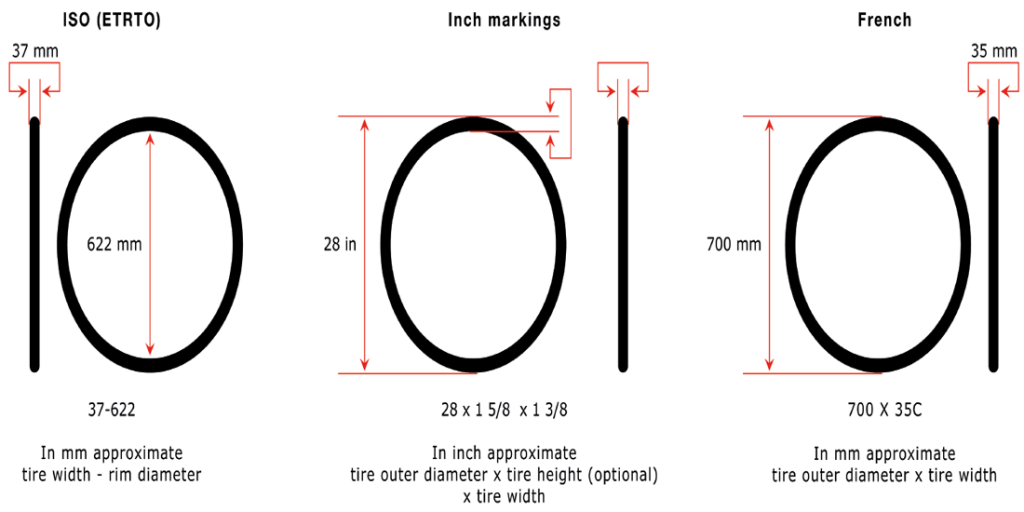 Both P-Metric and Euro-Metric size tires are designed to primarily be used on passenger vehicles, which can include cars, minivans, SUVs, and other light duty pickup trucks.
Both P-Metric and Euro-Metric size tires are designed to primarily be used on passenger vehicles, which can include cars, minivans, SUVs, and other light duty pickup trucks.
If your vehicle is an SUV, Pickup truck or van, you might see a different type of size designation on your placard that is specific for heavy duty light trucks and vans, especially common on ¾ ton and larger pickup trucks and vans. There are two common size types in this category, LT-Metric and Euro-Metric Commercial (aka C-type). Both size types are metric and so use the same structure as P-Metric and Euro-Metric but have some different characters in the size that differentiate them from their passenger car cousins. LT-Metric tires will have the letters “LT” before the size number sequence: LT245/75R17 119/116R Load Range E. Notice that there are two load index numbers and a Load Range, see the section on Load Index for more info. LT-Metric is a designation standardized by the Tire and Rim Association for a “light truck” type tire.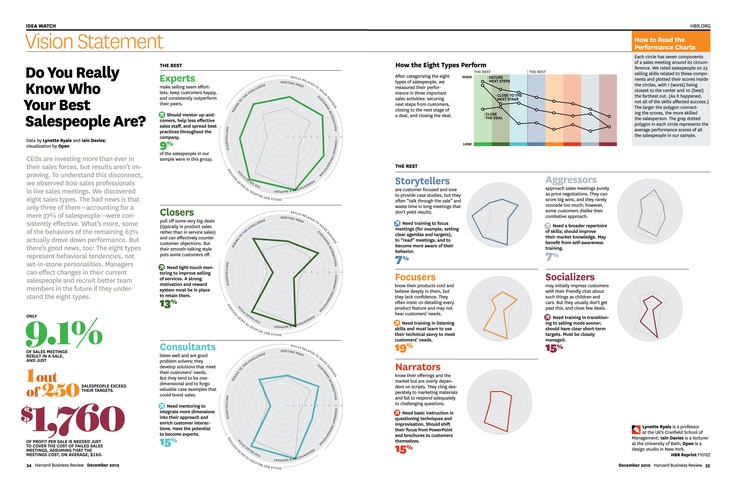 Euro-Metric Commercial or C-Type tires will look very similar to a passenger Euro-Metric size except that there will be a “C” right after the rim size: 23/65R16C 121/119R. Notice that the C-type tires also have two load index numbers. Euro-Metric Commercial, or C-Type is a designation standardized by the European Tyre and Rim Technical Organization for a light truck type tire. Light truck tires are designed to be used on vehicles capable of carrying heavy cargo and are usually only specified by a vehicle manufacturer on vehicles exceeding a certain load capacity.
Euro-Metric Commercial or C-Type tires will look very similar to a passenger Euro-Metric size except that there will be a “C” right after the rim size: 23/65R16C 121/119R. Notice that the C-type tires also have two load index numbers. Euro-Metric Commercial, or C-Type is a designation standardized by the European Tyre and Rim Technical Organization for a light truck type tire. Light truck tires are designed to be used on vehicles capable of carrying heavy cargo and are usually only specified by a vehicle manufacturer on vehicles exceeding a certain load capacity.
Other types of tires that fall into the Metric sizing type are Temporary Spares, they start with “T”. If you see a size that starts with “ST,” that means “special trailer” and is only for use on a trailer.
Regardless of whether you are looking at a P-Metric, Euro-Metric, LT-Metric, Euro-Metric Commercial, T or ST tire the numbers in the size mean the same thing.
The first number to appear in your tire size information is the width, in millimeters, of the correct tires for your vehicle: P225/70R16 91S..jpg)
Tire width always refers to the measurement from one sidewall to another. Thus, a tire with the measurement “P225” is for a passenger vehicle and has a nominal width of 225 millimeters.
After the slash mark, the next number you see is for the tire’s aspect ratio, which essentially tells you how tall your tire’s profile is: P225/70R16 91S. Aspect ratios are delivered in percentages. Tire makers calculate the aspect ratio by dividing a tire’s height off the rim by its width. If a tire has an aspect ratio of 70, it means the tire’s height is 70% of its width.
Lower aspect ratio tires, such as a 60 series, generally offer vehicle handling performance advantages over higher aspect ratio tires, such as a 75 series, but a typical trade off can be ride harshness.
After the aspect ratio comes a letter that indicates the type of internal construction maintaining your tire’s stability: P225/70R16 91S.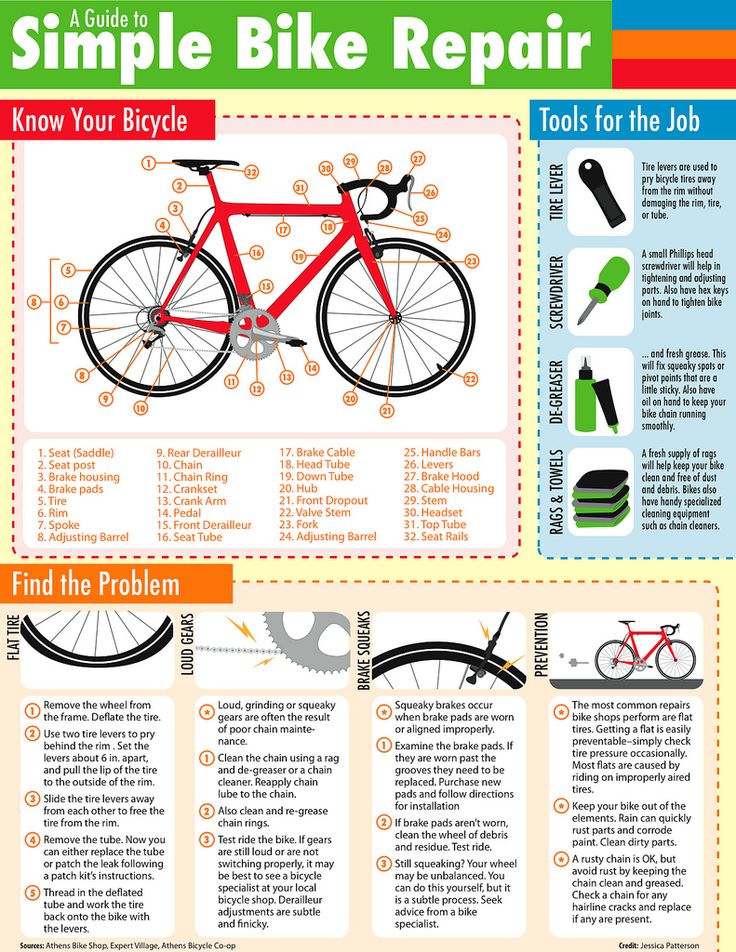
There are two types of construction that you may see on the sidewall of a tire:
Radial tires are the most common tires on the road in the United States today; thus “R” will usually be shown in the tire size designation. Radial construction means the tire’s internal ply cords are oriented in a radial direction, from one bead over to the other, essentially perpendicular to the direction of rotation. You may also occasionally see RF indicating a run flat tire or ZR indicating a tire that is a speed rating higher than V.
The next number is the diameter code, in inches, of the rim onto which the tire can be mounted. For example, a tire with the P225/70R16 91S would fit a rim with a 16-inch diameter.
Load index can be a confusing subject because there are so many different caveats, but we will try to explain everything here.
The next figure after the rim size in the sequence is your tire’s load index, which tells us how much weight, in pounds, the tire can support when fully inflated: P225/70R16 91S
We call it the load “index” because the number doesn’t tell us the precise number of pounds the tire can carry, at least not by itself. However, the number does correspond to a specific load capacity listed in an index. Beginning with 1 and ending with 150, numbers in the load index represent carrying capacities of 99 to 7385 lbs.
There are two types of load types for passenger tires though, Standard Load and Extra Load. If a tire is Standard Load there will be no markings indicating it but if it is Extra Load the letters XL will appear after the size and load index.
Standard Load Euro-Metric: 215/55R17 94V
Extra Load Euro-Metric: 215/55R17 98V XL
Passenger car tires like P-Metric and Euro-Metric will only have one load index number where LT-Metric and Euro-Metric Commercial (C-Type) will have two numbers separated by a slash. The first number is the load index if the tire is used in a single application, the second number is the load index if the tire is used in a dual application. Passenger type tires cannot be used in a dual application. Light truck tires will also have a Load Range that is indicated by a letter, such as Load Range E. Load Range is an older term that is still commonly used in the industry so you may hear your tire dealer reference it but the load index numbers are the best way to ensure you have the proper tire.
The first number is the load index if the tire is used in a single application, the second number is the load index if the tire is used in a dual application. Passenger type tires cannot be used in a dual application. Light truck tires will also have a Load Range that is indicated by a letter, such as Load Range E. Load Range is an older term that is still commonly used in the industry so you may hear your tire dealer reference it but the load index numbers are the best way to ensure you have the proper tire.
One important but often misunderstood facet about load index is that the load index numbers between standards organizations (P-Metric vs Euro-Metric) are not necessarily on the same scale. Meaning that two tires in the two different systems that have the same load index number could have different maximum load capacities. This is why it’s important to not only look at the load index number but also verify the actual load capacity.
The final figure in a tire size sequence is the speed rating, which is indicated by a letter: P225/70R16 91S.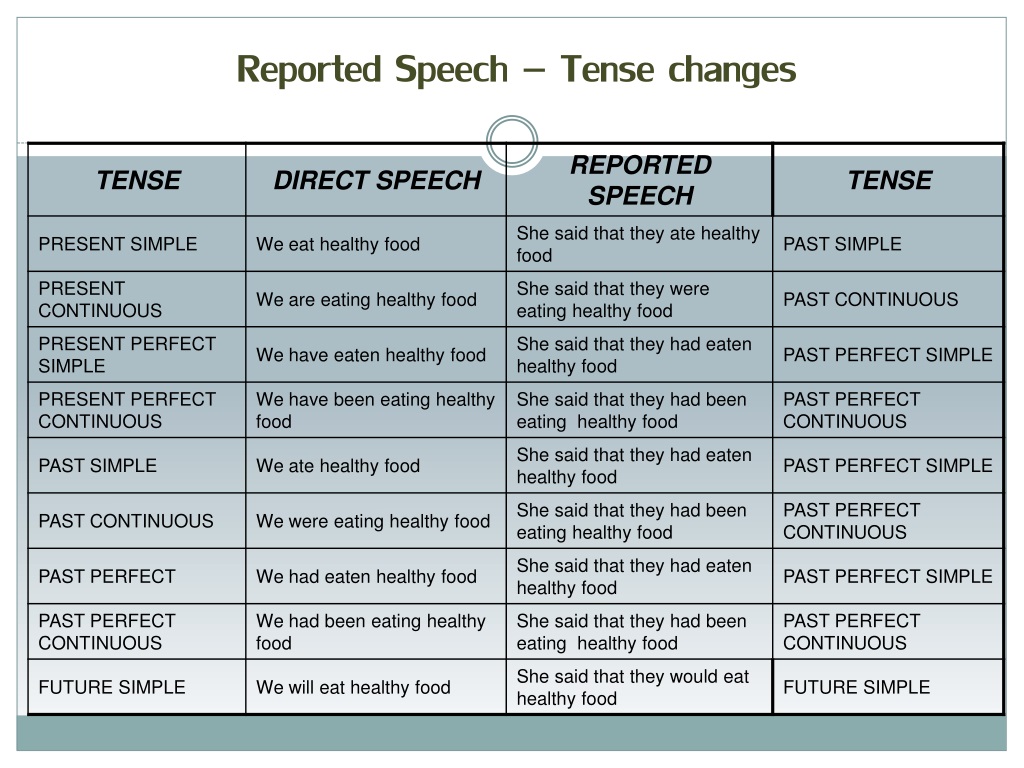 Just as your load index number corresponds to a specific load, your speed rating letter corresponds to a particular speed capability based on a standardized laboratory test.
Just as your load index number corresponds to a specific load, your speed rating letter corresponds to a particular speed capability based on a standardized laboratory test.
For example, a tire with speed rating “S” is rated for up to 112 mph, while a tire rated “R” is up to 106 mph. Remember that this isn’t a recommended cruising speed. Of course, you should always follow legal speed limits on roadways.
Replacement tires must have the same or higher speed rating as the vehicle’s Original Equipment to maintain vehicle speed capability. If a vehicle has tires with different speed ratings, it is the speed rating of the “slowest” tire that dictates the vehicle top speed.
There is one last sizing type that you should know about, especially if you are in the market for off road tires for a light truck or SUV. It’s called a Flotation size and the numbers in this sizing format are very different from the Metric formats.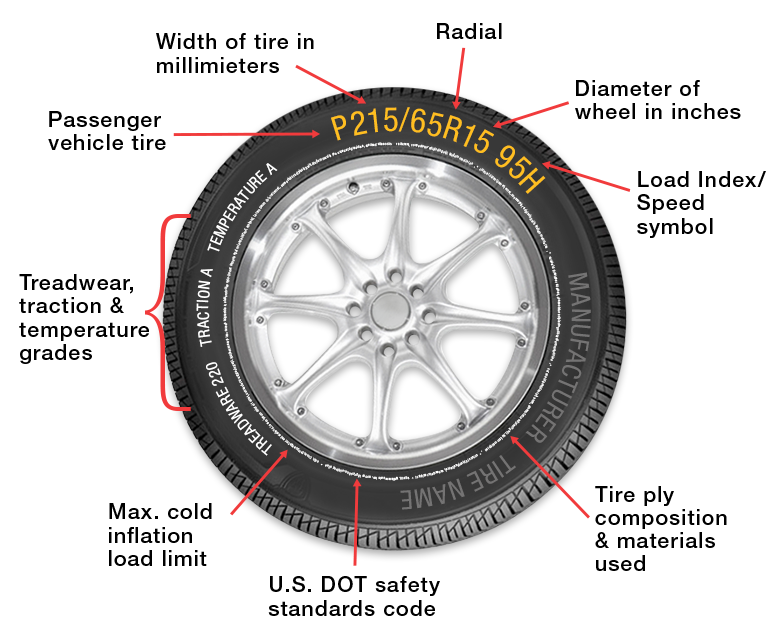 Flotation sized tires are similar to LT-Metric tires in application except for a few important points. Number one, they cannot be used in dual applications and number two, an equivalent size tire may have different load capacity than its LT-Metric counterpart.
Flotation sized tires are similar to LT-Metric tires in application except for a few important points. Number one, they cannot be used in dual applications and number two, an equivalent size tire may have different load capacity than its LT-Metric counterpart.
The first number in the Flotation tire size is the overall diameter in inches. Pretty straight forward.
The second number is the section width (sidewall to sidewall) measurement in inches. Again, fairly simple.
After the section width comes a letter that indicates the type of internal construction: 33X12.50R17LT 120Q.
This is the same as is found in the metric sizing systems.
There are two types of construction that you may see on the sidewall of a tire:
Radial tires are the most common tires on the road in the United States today; thus “R” will usually be shown in the tire size designation.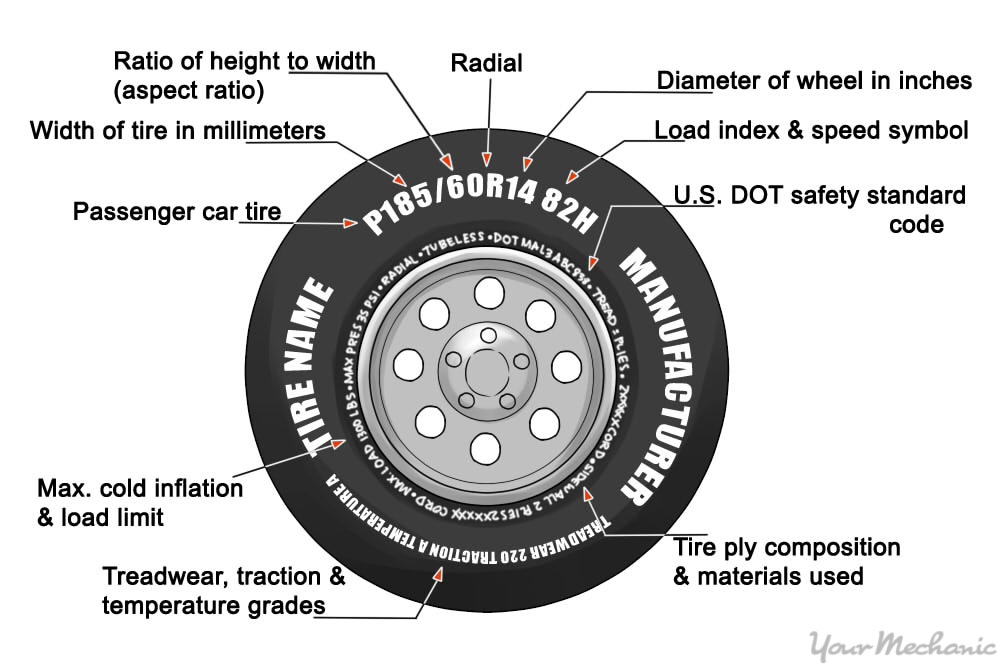 Radial construction means the tire’s internal ply cords are oriented in a radial direction, from one bead over to the other, essentially perpendicular to the direction of rotation.
Radial construction means the tire’s internal ply cords are oriented in a radial direction, from one bead over to the other, essentially perpendicular to the direction of rotation.
The next number is the diameter code, in inches, of the rim onto which the tire can be mounted. For example, a tire with the 33X12.50R17LT 120Q would fit a rim with a 17-inch diameter.
The letters LT will be after the Rim Diameter indicating that this tire type is intended for Light Truck vehicles similar to the LT-Metric and Euro-Metric Commercial (C-Type) tires.
Load Index and Speed Rating have the same meaning and format as the tires using the metric sizing system. Note that since flotation tires cannot be used in a dual application there will be only one load index number instead of two.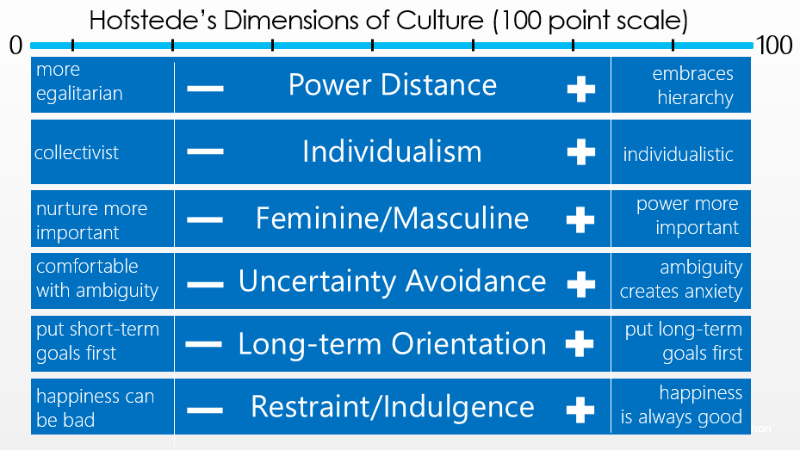
Another group of stamping on certain types of tires is the Uniform Tire Quality Grading or UTQG. This grading and stamping is required for passenger car tires (i.e. P-metric and Euro-metric) in the all season and summer categories. Dedicated winter tires, Light Truck (LT-Metric, Euro-Metric Commercial, Flotation) and Motorcycle tires are excluded from this requirement.
Quality grading is designed to make the tire purchase decision easier for you. Ideally, the system is intended to provide simple, comparative data so you can make an intelligent buying decision. However, the ratings are based upon test results achieved under special conditions. This means it’s possible to misinterpret the comparative data as it relates to your individual driving habits, conditions, etc. You should still rely on your service or tire professional for assistance.
Quality grading designates the comparative performance levels of a tire based on government-specified tests but commissioned by the individual tire manufacturers.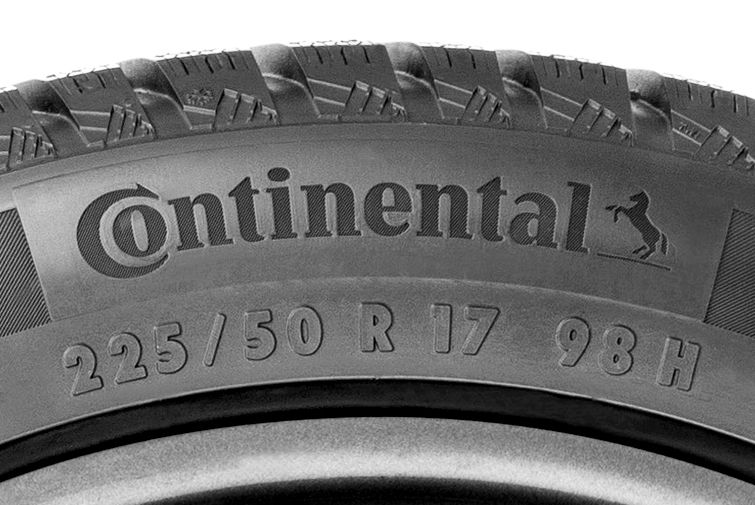 All tire manufacturers are required to grade regular and all-season passenger tires in three categories:
All tire manufacturers are required to grade regular and all-season passenger tires in three categories:
UTQG
Treadwear
The treadwear grade is a comparative rating based on the wear rate of the tire when tested under controlled conditions on a specified government test course for 6,000 miles (9,600 km). For example, a tire graded 150 would wear one and a half times as well on the government course as a tire graded 100. However actual tire performance depends on driving habits, road characteristics, service practices, and other factors that can influence the outcome.
Traction Grades AA, A, B and C
The traction grades from highest to lowest are AA (the highest), A, B and C. They represent how well tires stop on wet pavement as measured under controlled conditions on specified government test surfaces of asphalt and concrete. C-rated tires will have the lowest traction performance.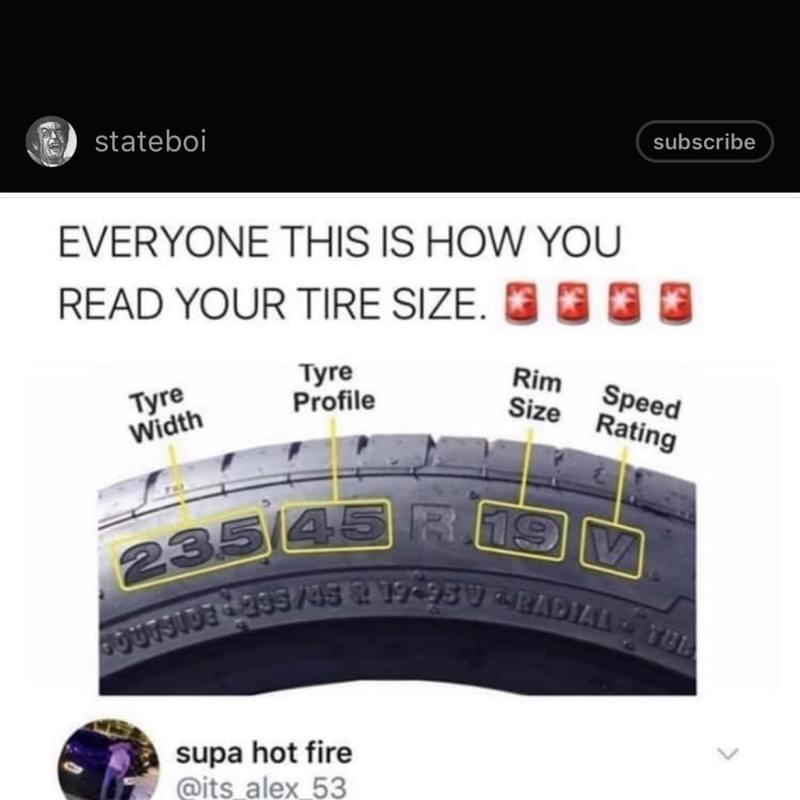
WARNING: THE TRACTION GRADE ASSIGNED IS BASED ON A WET BRAKING (STRAIGHT AHEAD) TRACTION TEST AND DOES NOT INCLUDE CORNERING (TURNING) TRACTION.
Temperature Grades A, B and C
The temperature grades A, B, and C represent the tire's resistance to the generation of heat and its ability to dissipate heat when tested under controlled conditions on a specified indoor laboratory test wheel. Sustained high temperature can cause the tire’s material to degenerate and reduce tire life, and excessive temperature can lead to sudden tire failure. The grade C corresponds to a performance level all passenger car tires must meet under the Federal Motor Vehicle Safety Standard No. 109. Grades A and B represent higher levels of performance on the laboratory test wheel than the minimum required by law.
WARNING: THE TEMPERATURE GRADE IS ESTABLISHED FOR A TIRE THAT IS PROPERLY INFLATED AND NOT OVERLOADED. EXCESSIVE SPEED, UNDER INFLATION, OR EXCESSIVE LOADING, EITHER SEPARATELY OR IN COMBINATION, CAN CAUSE HEAT BUILDUP AND POSSIBLE TIRE FAILURE.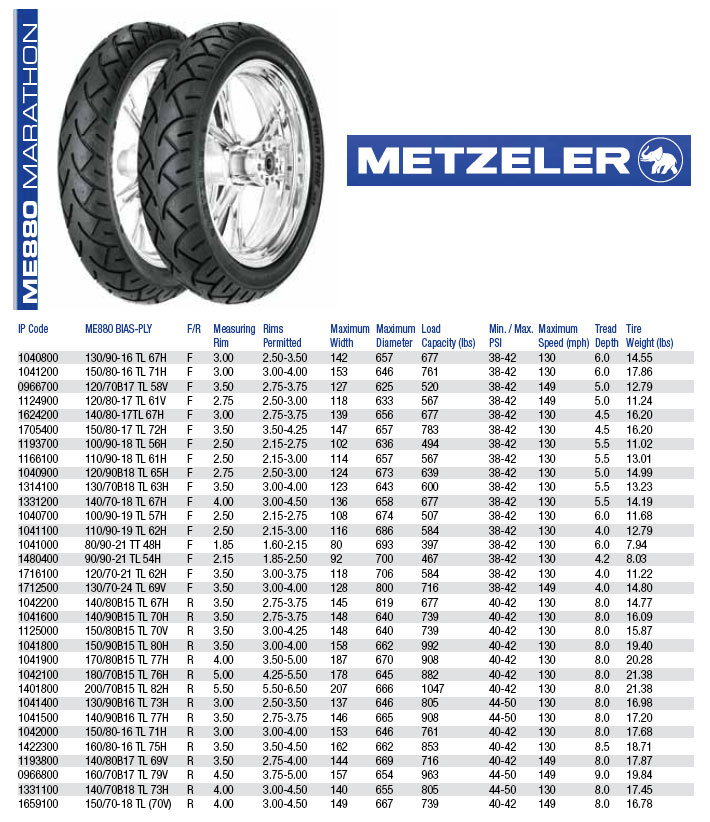
DOT Quality Grades
All passenger car tires must conform to other federal requirements in addition to these grades.
Learn about our mission, our achievements, and our ongoing commitments
Read Our Origin Story
Installing the right tires on your vehicle is essential to the overall performance and safety of your vehicle. Your tire choice should reflect the conditions in which you drive and your preferences for vehicle response and handling. To make the most informed decision, though, you must understand how to read tire size when it's time to buy tires.
Thankfully, determining the correct tire size for your vehicle is relatively simple. All the information you need is immediately available either in your owner's manual or somewhere on the vehicle itself. Already know how to read tire size numbers? Skip the explanation and find the right Bridgestone tire for your vehicle online or by visiting a Bridgestone tire dealer near you.
While actual, physical measurements like width and diameter are factors in finding the right tire size, there are additional details to consider. Knowing how to read car tire sizes also means understanding terms like load index and speed rating that affect your vehicle's overall capabilities.
No matter what vehicle you drive, finding the manufacturer-recommended tire size should be easy. The best place to start looking is the owner's manual.
Don't worry if you can't locate the manual; you may also find a tire fit guide in these locations:
You can also find tire size data on the sidewall of your current tires (assuming they're the proper size). However, no matter where you find your tire size, you will have to decipher a sequence of numbers and letters. Don't worry if it looks confusing at first — every letter and number has a straightforward meaning.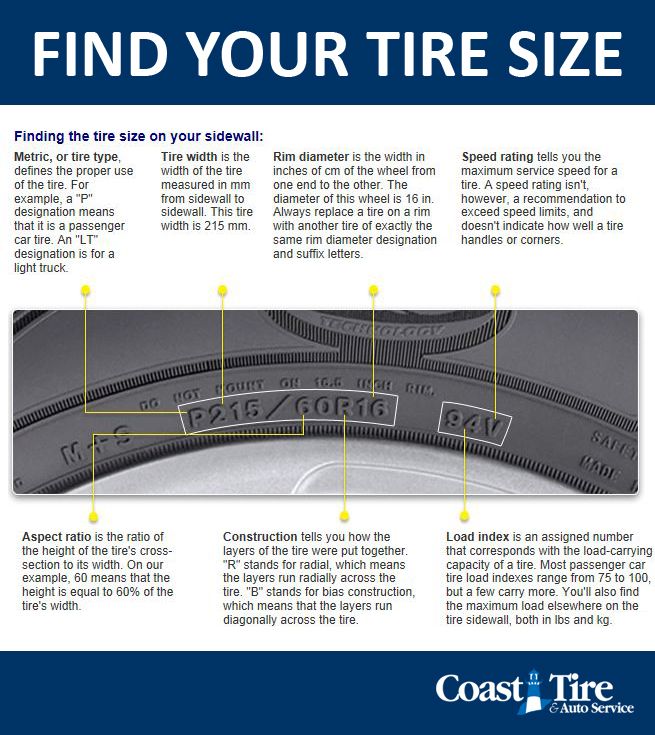 Let's break down how to read car tire size.
Let's break down how to read car tire size.
Let's take a look at what each number or letter stands for, one by one, in the order they appear in your tire size data. We'll be using this tire size as an example: P225/70R16 91S.
For most vehicles, you'll see the letter "P" before the number sequence begins: P225/70R16 91S. The "P" is short for "P-metric," which is a designation by the Tire and Rim Association for a "passenger car" tire type. A "P" signifies the tire was designed to primarily be used on passenger vehicles, which can include cars, minivans, SUV's and other light-duty pickup trucks.
If you see "LT" instead of "P," it's because you need "light truck" tires – "LT" is short for "LT-metric," which is a designation by the Tire and Rim Association for a "light truck" type tire. Light truck tires are designed to be used on vehicles capable of carrying heavy cargo or pulling trailers.
Similarly, "T" stands for "temporary" and is for your spare tire. If you see "ST," that means "special trailer." A special trailer tire is never installed on the drive or steer wheels. It's only intended for use on trailer axles.
If you see "ST," that means "special trailer." A special trailer tire is never installed on the drive or steer wheels. It's only intended for use on trailer axles.
The first number to appear in your tire size information is the width, in millimeters, of the correct tires for your vehicle: P225/70R16 91S.
Tire width always refers to the measurement from one sidewall to another. Thus, a tire with the measurement "P225" is for a passenger vehicle and has a nominal width of 225 millimeters.
After the slash mark, the next number you see is for the tire's aspect ratio, which essentially tells you how tall your tire's profile is: P225/70R16 91S. Aspect ratios are delivered in percentages. Tire makers calculate the aspect ratio by dividing a tire's sidewall height by its width. If a tire has an aspect ratio of 70, it means the tire's height is 70% of its width.
Lower aspect ratio tires, such as a 60 series, generally offer vehicle handling performance advantages over higher aspect ratio tires, such as a 75 series.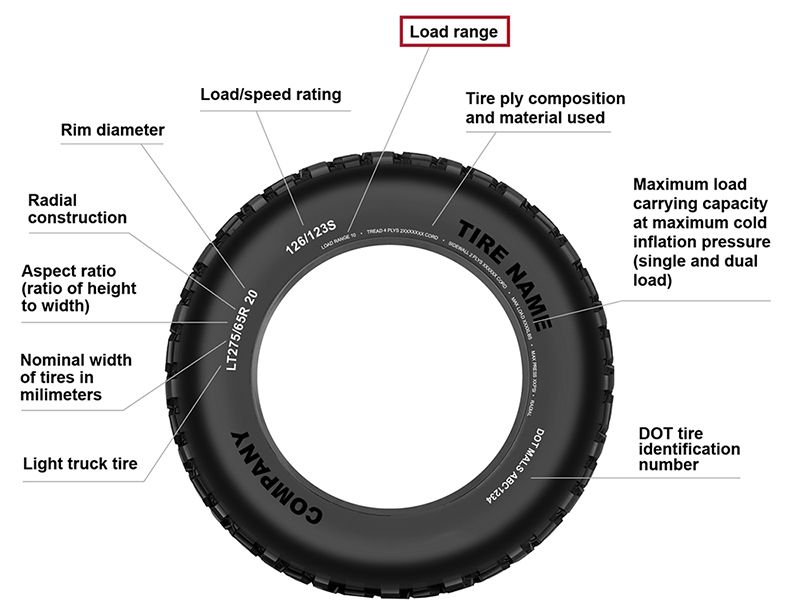
After the aspect ratio comes a letter to indicate the tire's construction: P225/70R16 91S. "R" refers to the internal structure of your tire and gives you a general idea of its stability.
There are two types of construction that you may see on the sidewall of a tire
"Bias-ply" tires were used on automobiles and light trucks until the '70s," reports the classic car site, Hemmings. But radial tires represent the vast majority of tires on the road in the United States today. In fact, you will almost always see the letter "R" on tires as radial tires have been the industry standard for over 40 years. Radial construction means the tire's internal ply cords are oriented in a radial direction (at 90 degrees to the centerline of the tread).
The next number is the wheel’s diameter. For example, a tire with the P225/70R16 91S would fit a rim with a 16-inch diameter.
Take note: if you decide to change your rims' size, you will also need to get new tires that are compatible with the change in size. Tires designed to fit a 16-inch wheel diameter will not stretch to fit on new 18-inch rims.
Tires designed to fit a 16-inch wheel diameter will not stretch to fit on new 18-inch rims.
View Other Common Diameter Sizes:
14-Inch Diameter Tires
15-Inch Diameter Tires
17-Inch Diameter Tires
18-Inch Diameter Tires
19-Inch Diameter Tires
20-Inch Diameter Tires
21-Inch Diameter Tires
22-Inch Diameter Tires
The next figure needed to read tire size numbers is your tire's load index. The load index tells us how much weight, in pounds, the tire can support when fully inflated: P225/70R16 91S.
It is called the load "index" because the figure doesn't tell us the precise number of pounds the tire can support, at least not by itself. Instead, the number corresponds to a specific load capacity listed in an index. Beginning with one and ending with 150, numbers in the load index represent carrying capacities of 99 to 7385 lbs.
Additionally, you may not find this number present on all tires. This is because the load index is not required by law to be printed on tires. If there is no load index measurement on your tires, check the owner's manual or contact your local Bridgestone tire dealer for more information.
If there is no load index measurement on your tires, check the owner's manual or contact your local Bridgestone tire dealer for more information.
The final figure in a tire size sequence is the speed rating indicated by a letter: P225/70R16 91S. Just as your load index number corresponds to a particular load, your speed rating letter corresponds to a specific speed capability based on a standardized laboratory test.
For example, a tire with a speed rating "S" is rated for up to 112 mph, while a tire rated "R" is up to 106 mph. Remember that this isn't a recommended cruising speed, but rather the maximum speed that tire type can withstand. Of course, you should always follow legal speed limits on roadways.
Here are the most common letters for speed ratings and their corresponding maximum speeds:
Tires with higher speed ratings tend to offer increased handling performance. Replacement tires must have the same or higher speed rating to maintain vehicle speed capability. If a vehicle has tires with different speed ratings, the speed rating of the "slowest" tire dictates the vehicle's top speed.
Replacement tires must have the same or higher speed rating to maintain vehicle speed capability. If a vehicle has tires with different speed ratings, the speed rating of the "slowest" tire dictates the vehicle's top speed.
Like the load index, the speed rating is not required by law to be listed on all tires. If your tires do not have the speed rating listed, your owner's manual will have the relevant information for your model's stock tire type.
You may find "M+S" or "M/S" after the main tire size sequence on some tires. This indicates that the tire has some capacity to handle snow and mud conditions. This indication is common on most radial or "R" type tires.
You may notice another set of letters and numbers on your tire's sidewall beginning with "DOT." This is not an indication of tire size, but rather that the tire complies with Federal Motor Vehicle Safety Standards. The "DOT" stands for Department of Transportation and is followed by the tire identification number.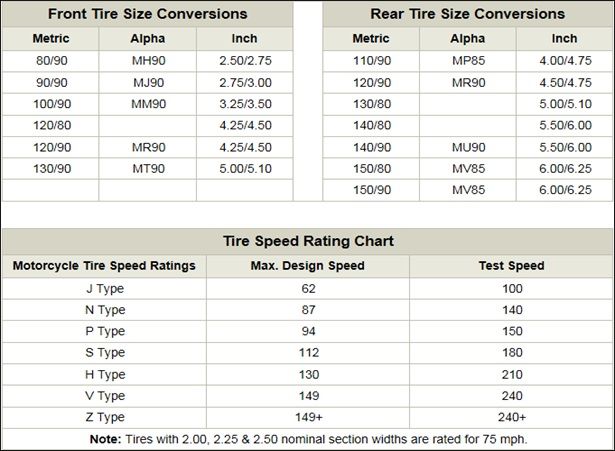
The first two letters or numbers after DOT refer to the manufacturing plant where the tire was produced and the last four numbers indicate the week and year the tire was made. The numbers 4318, for instance, indicate that the tire was manufactured during the 43rd week of 2018.
While it's certainly possible to upgrade your tires' size, it's usually best to stick to your manufacturer-recommended tire size for optimal performance. Increasing the size of your tires may give your car more ground clearance, but it may also affect handling, drivetrain performance and fuel economy. Keep in mind the changes to key figures mentioned above, such as load index and speed rating, and how they may affect your vehicle's capabilities if you decide to increase tire size.
Once you know how to read the numbers on tires, you can explore tires by size and narrow down your tire options quickly. Compare tire sizes online or visit a Bridgestone tire dealer near you for help.
Before you start buying tires, you need to find out what type of tires are right for your car. Tires are not universal - different makes and models of cars require different tires. And the required tire size can vary widely even within the car model depending on the trim kit, more details on the website https://vladimir.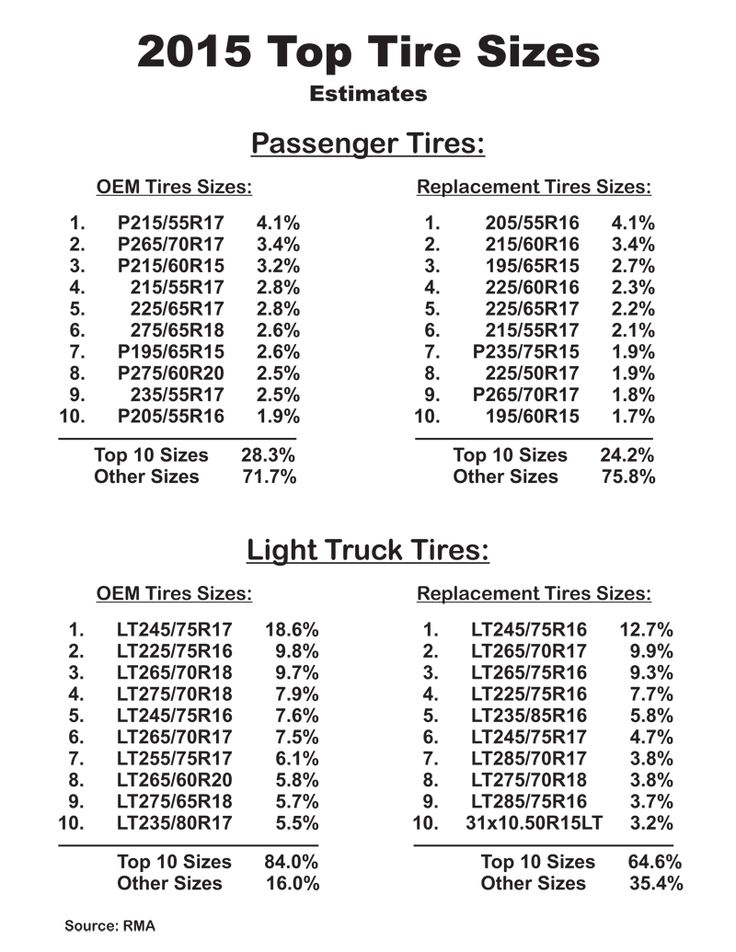 koleso.ru. Take Toyota Corolla for example: Corollas may need up to 5 tires of different sizes depending on what trim package they have.
koleso.ru. Take Toyota Corolla for example: Corollas may need up to 5 tires of different sizes depending on what trim package they have.
What to look for when choosing a tire shop?
Tire size is much more than just a letter or number; it's a string of letters and numbers representing everything from the physical dimensions of the tire to how much weight the tire can handle and how fast it can go.
If you're not sure what tire size your car needs, there are several ways to find out.
Being able to quickly look at the sidewall of a tire and determine the right tire size for your particular vehicle can save you time, trouble and money. However, not many people know how to actually determine the tire size, even if it's printed right on the sidewall. This combination of letters and numbers is not as easy to read as finding shoes 9-th size.
However, not many people know how to actually determine the tire size, even if it's printed right on the sidewall. This combination of letters and numbers is not as easy to read as finding shoes 9-th size.
In addition to the fact that tires need to physically fit your vehicle, there are several reasons why you need to have tires of the correct size.
Your tires carry the entire weight of your vehicle and are the only parts of your vehicle that actually make contact with the road. Make sure you choose the right tire size when it's time to buy new tires, critical to the health of your tires and vehicle.
The job of a tire is to carry your car and steer it where it needs to go, so when a tire is too big or too small, it not only reduces performance but also compromises your safety. Your tires need to be wide, strong, and thick enough to support the weight of your vehicle, yet be able to turn and move.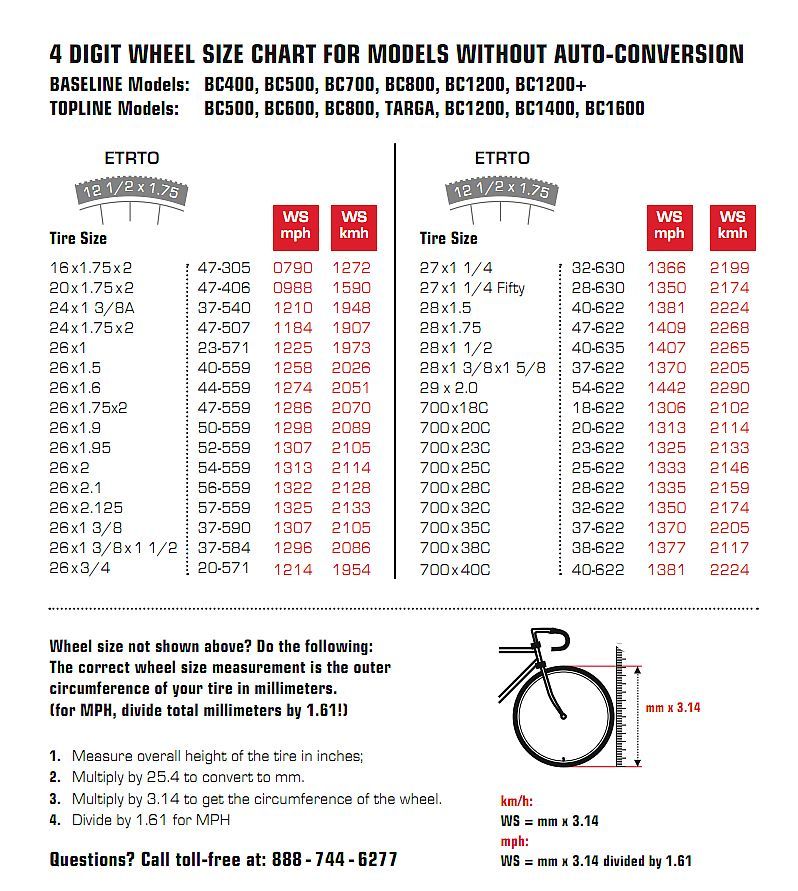 Scratching the sides or getting stuck while trying to turn can seriously damage your tires, forcing you to replace them much sooner than you would otherwise.
Scratching the sides or getting stuck while trying to turn can seriously damage your tires, forcing you to replace them much sooner than you would otherwise.
For the first time looking at tire size, it may seem like you are reading a foreign language, but once you learn to parse the meaning of each part of tire size, you will find that they are not so complicated.
Tire type refers to the service or vehicle type for which the tire was designed. "P" stands for "passenger" and is the most common tire type. "LT" (Light Heavy Duty Trucks) is another common tire type designation you're likely to come across. Other types of tires include "T" (temporary), "ST" (trailer), and "C" (commercial). If there is no letter, it usually means that the tire was made in Europe for European cars. These types of tires are called metric or Euro-metric tires and are similar to passenger tires in many ways.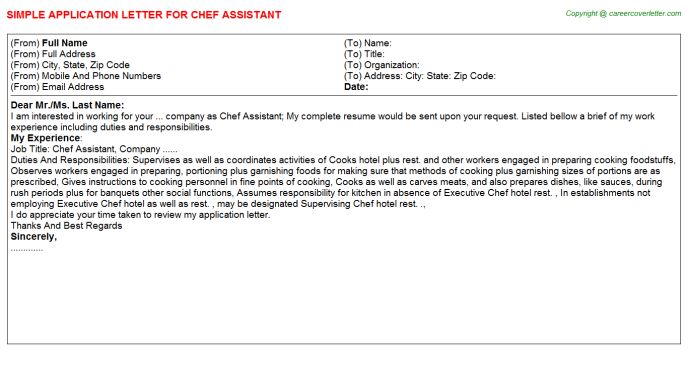
In millimeters, this is the distance from sidewall to sidewall along the tire width.
Aspect ratio refers to the ratio between tire sidewall height and tire width as a percentage. Sidewall height can be determined by measuring the distance between the edge of the rim and the top of the tire at the edge of the tread. The aspect ratio means how well your car can handle the tire. The higher the aspect ratio, the longer your tire takes to respond to a turn command, making it easier to manage tires with less aspect ratio.
This refers to how the tire was constructed. Typically, you will only see the letter "R" for "radial tyre" as this is the most common type of tire currently being produced. Radial tires are constructed by assembling piles perpendicular to their direction of travel, resulting in a smoother ride, longer tread life and reduced fuel consumption.
Wheel size, measured from the center of the tire from end to end, refers to your wheel diameter and is usually measured in inches. The overall wheel size is often referred to as the rim diameter, which indicates the size of tire your car needs.
Load Index is a shorthand way of describing the total weight a tire can support when it is fully inflated. The higher the load index, the more weight the tire can support. To see how your load index compares to the weight the tire can handle. For example, a load index of 81 means that the tire can withstand up to 1019pounds. Load index values for an average car range from 75 to 100, but some tires can go as high as 150, which is 7,385 pounds.
Like Load Index, Speed Rating is another shorthand way of referring to how fast a tire is rated. Indicated by a letter corresponding to the maximum speed of the tire.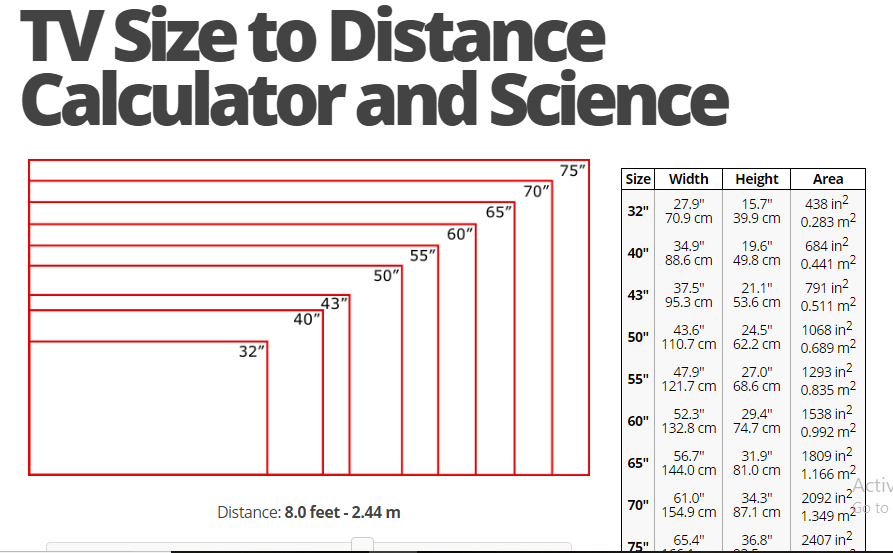 For example, a "T" speed rating means the tire is rated for speeds up to 118 mph.
For example, a "T" speed rating means the tire is rated for speeds up to 118 mph.
Breaking down the tire size measurement into separate parts, you can easily read it if you are in the know. Now that you know what each element of the tire size means, we can look at an example of how to calculate the sidewall tire size.
P (Tire type): is a passenger tire, one of the most common tire types.
255 (tire width): tire width is 255 millimeters sidewall to sidewall (just over ten inches).
45 (Aspect Ratio): The tire sidewall is 45% of the width of the tire, which means the sidewall length is about 114 millimeters or just over 4 inches.
R (Construction type): Radial tyre, the most common type of tire manufactured today.
18 (Wheel Size / Rim Diameter): Edge to edge tire diameter is 18 inches across.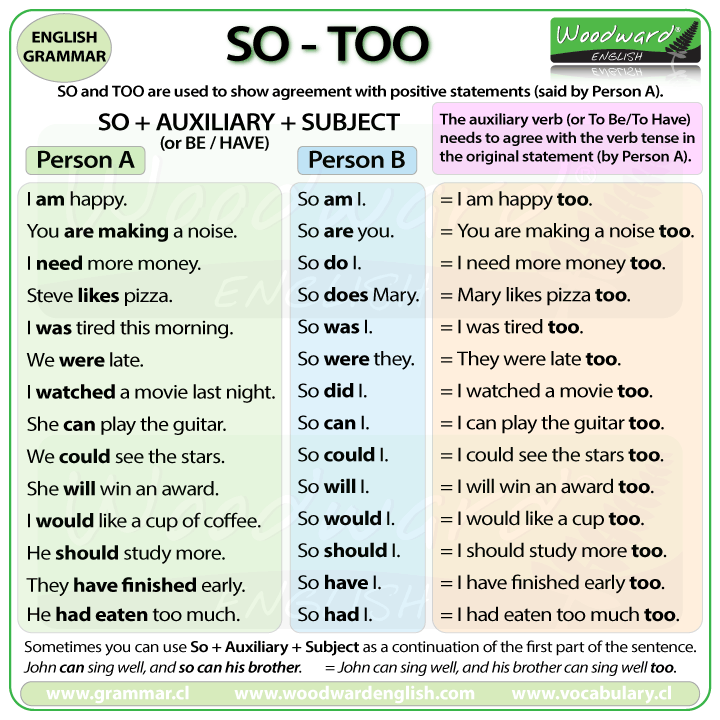
103 (load index): load index 103 means this tire can withstand up to 1929 pounds.
H (Speed Rating): "H" speed rating means this tire is rated for speeds up to 130 mph.
So a P255/45R18 103H tire would be a passenger car tire with a width of 255 millimeters, a thickness or aspect ratio equal to 45% of the height of the tire, which in this case is 114 millimeters. It's also an 18-inch radial tire that can handle up to 1,929 pounds and reach speeds of up to 130 mph.
If you are going to buy new tires, it is important to first know what type and size your car currently has. Once you figure this out, ask yourself a few questions to see if you need to change anything.
If you're happy with your current tires, shopping is easy: just buy the same model you already have! But if you're ready to mix things up, talk to us! Virginia Tire & Auto's tire experts can help you evaluate the quality of your current tires and choose the best option for your next set.
Another thing to think about before investing in a new set of tires is which tire benefits are most important to you. There are 5 main benefits to look out for:
1. All-Season Reliability
While most of the tires we sell are rated for all-weather use, some go to great lengths to provide traction and versatility in all weather conditions (including light snow) as well as good wear and driving comfort.
2. Comfortable ride.
Are you tired of feeling every bump in the road? Do you need to increase the volume of the radio to increase the speed? Look for tires that have proven to be smooth and comfortable to drive with little or no road noise.
3. Fuel Efficiency
Thanks to advances in tire technology and design, many tires are now designed to use less energy (such as fuel) to propel them forward.
4. Long tread life
All tires come with a manufacturer's tread life guarantee. You can expect your tires to last as long as or longer than the warranty mileage, helping you get the extra mile.
You can expect your tires to last as long as or longer than the warranty mileage, helping you get the extra mile.
5. Sporty Performance / Confident Handling
If you love to drive and feel the road underneath you, look for tires designed for high performance vehicles or well rated for handling and braking response.
Find out which benefits are most important to you, and this will help make your decision easier when you start comparing tires.
How often do you visit high traffic areas such as I-95 or I-66, or are you more likely to travel on open highways? Where and how you drive will determine which tires are right for your car.
Tires respond well to sustained speeds on smooth surfaces such as highways, while short stop-and-go trips tend to wear out your tires more.
You also need to choose the right tires for your climate. In seasonal climates such as Virginia, we recommend that you buy a set of all-season tires for year-round use. Drivers further south will want to purchase all-season or summer tires. And drivers who regularly experience freezing temperatures, ice and snow should purchase a set of winter tires to use during the colder months.
Drivers further south will want to purchase all-season or summer tires. And drivers who regularly experience freezing temperatures, ice and snow should purchase a set of winter tires to use during the colder months.
When buying new tires, it is important to consider your daily driving and driving habits. For those who rarely drive and simply need to get from point A to point B, the requirements for tires will be different from those for tires that are heavily muted or travel over rough terrain.
Northern Virginia riders may not drive long distances every day or travel at high speeds, but they often get stuck in traffic. In fact, the southern corridor of I-95, which passes through Prince William, Fairfax and Stafford counties, is one of the busiest transport hubs in the country. With an average of nearly four traffic jams a day, commuters who regularly navigate this crowded area are likely to see abnormal tire wear.
For tire fitting, we recommend the koleso. ru network.
ru network.
So, you are planning to replace car tires - no matter for what reason, maybe the old tires are out of order or you are planning to change the appearance of your car - the first thing you will need to decide is to decide what size car tires are needed specifically for your vehicle. Only after that you will be able to choose a suitable tire model in the online store. Understanding the marking of rubber is not as difficult as it seems - just read the information in this article.
The vehicle type for which each tire is designed is indicated by numbers or letters on the tire. Typical tire operating conditions can be seen here.
Let's consider an example - size P 225/45R17 91S.
The letter "P" on car tires indicates that the product is intended for passenger cars and is present in the P-metric system, which began to be used more than 40 years ago and is still in use today.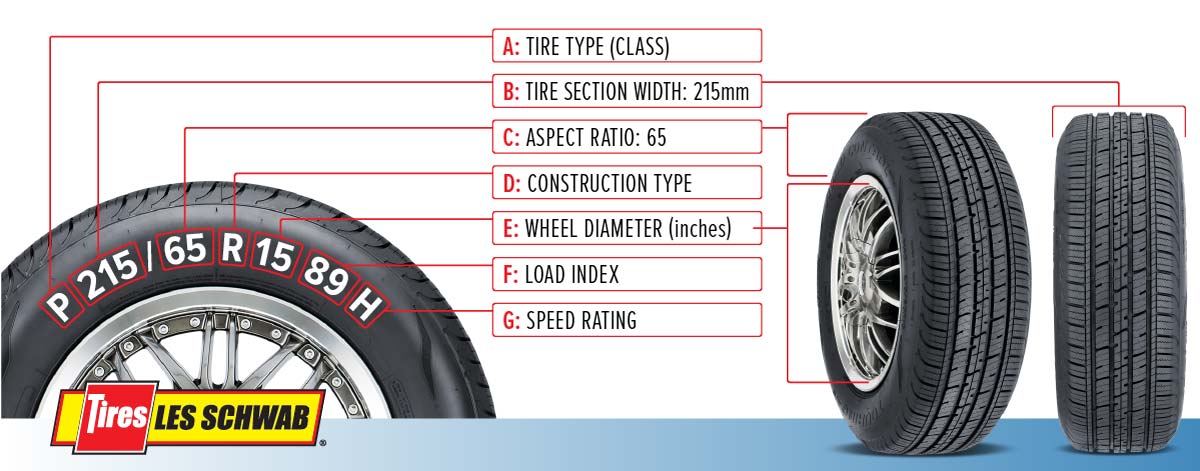 Passenger cars include passenger cars, minivans, pickup trucks and light (parquet) SUVs. The carrying capacity of vehicles for which tires with the P mark are intended should be in the range from 250 to 500 kg per 1 wheel.
Passenger cars include passenger cars, minivans, pickup trucks and light (parquet) SUVs. The carrying capacity of vehicles for which tires with the P mark are intended should be in the range from 250 to 500 kg per 1 wheel.
If the rubber marking does not start with a letter and three numbers, this means that this tire is made according to a different dimensional system - Euro-metric, which is common in European countries and applies to car tires for passenger cars, vans and light SUVs. The size range in the P-metric and Euro-metric systems is almost identical, the differences exist only in the ultimate load.
Consider another example - T125/90D16 98M.
Tire markings beginning with the letter T indicate that the tire is a spare tire and can only be used during tire fitting work on the main tire.
If the tire marking begins with the letter designation LT, this indicates that the product belongs to the Light Truck-metric size system, which is used to designate the size range of automotive rubber installed on large vehicles, pickups, vans, powerful SUVs with a load capacity of 750 up to 1000 kg.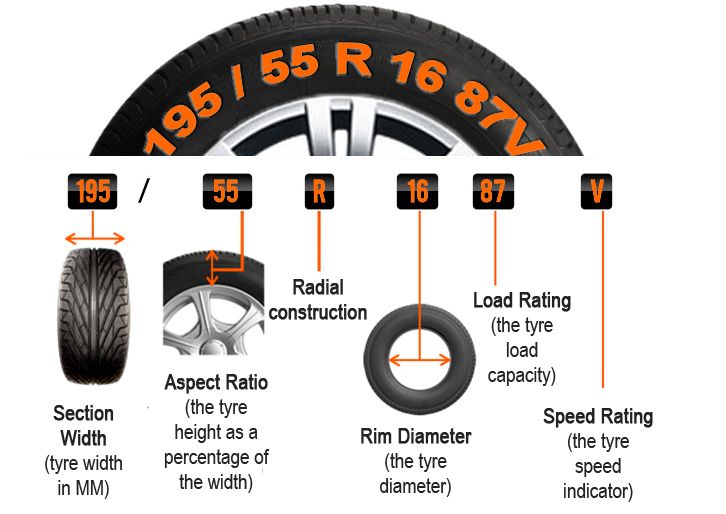
If the marking of a car tire ends with the letter LT, this means that the tire belongs to one of three marking systems - flotation (Flotation), numerical (Numeric) or with a wide base (Wide Base). These systems apply to tire sizes for heavy trucks and trailers. For such vehicles, rim diameters start at 16.5 inches, with the help of a large tire, the car easily copes with the most difficult and difficult trails. In this category, you can pick up tires for cars weighing from 500 to 1000 kg.
In the Euro-metric system, the letter designation may come after the number, for example, the letter C in this example is /70R15C 104/102R. This means that this rubber is intended for use on commercial vehicles - trucks, trucks or vans. In addition to marking C, the letter designation B or D may be allowed, which also corresponds to a certain load range.
A tire label that begins with the letter ST, eg ST225/75R15, indicates that the tire is for general or special purpose vehicle trailers.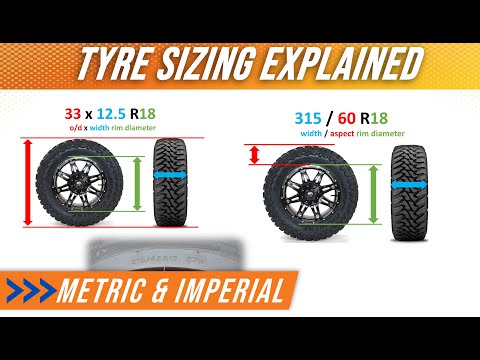 Tires with this marking are not permitted on cars, trucks, vans and pickup trucks.
Tires with this marking are not permitted on cars, trucks, vans and pickup trucks.
A specialist from our GOOD WHEELS company can always help you to more accurately determine the choice of tire sizes and the most suitable tire modification for your car - just make a call to the indicated numbers or leave a request on the website - you will be given a detailed consultation on the model and size range. We recommend that you have at least basic knowledge in this area - this knowledge will always be useful to you and you can learn it by asking a consultant of our tire center.
Everything is much simpler here than with letter designations. The three-digit number after the letter indicates the size of the tire width in millimeters. For example - 225/45R17 91S. Here the number 225 is the width of the tire from outside to inside when measured directly on the wheel after installation.
The next two digits indicate the numerical value of the ratio of the height of the tire to the width of the profile.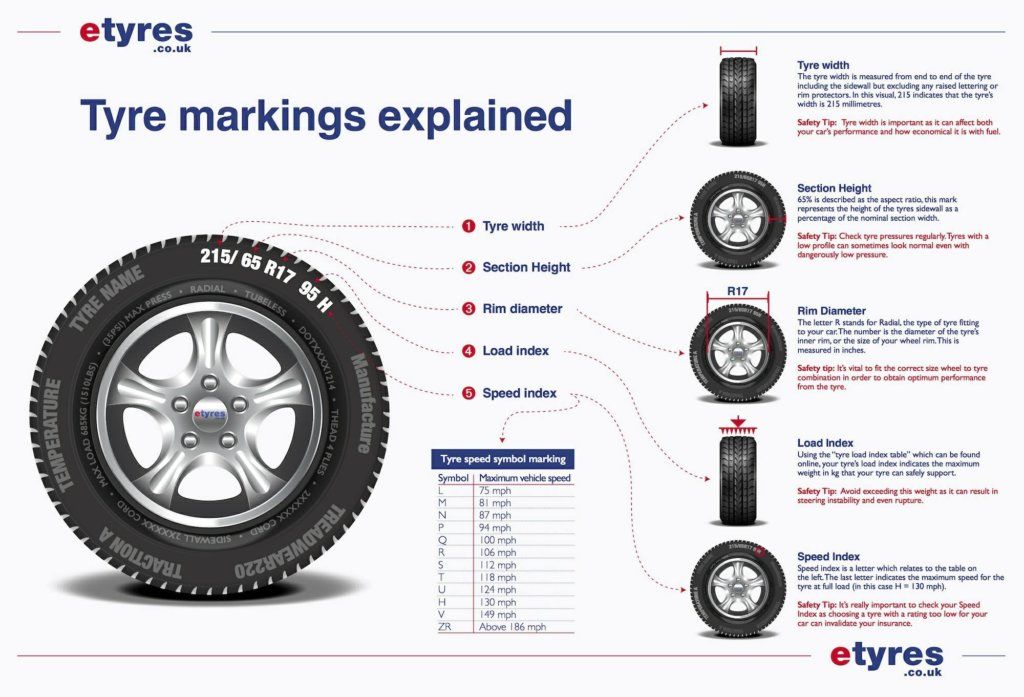 For example, in this case - 225/45R17 91S figure 45 means that the height of the tire is 45 percent of the profile width. Height is measured from the outer edge of the wheel to the seat rim. That is, the higher the number, the larger the sidewall of the tire. If we know that the tire width is 225 millimeters, and the digital value is 45, then this means that the profile height is 101.25 mm. In another example - 225 / 70R16 - the ratio is slightly different, with a width of 225 mm, the height is 70 percent, that is, 157.5 mm.
For example, in this case - 225/45R17 91S figure 45 means that the height of the tire is 45 percent of the profile width. Height is measured from the outer edge of the wheel to the seat rim. That is, the higher the number, the larger the sidewall of the tire. If we know that the tire width is 225 millimeters, and the digital value is 45, then this means that the profile height is 101.25 mm. In another example - 225 / 70R16 - the ratio is slightly different, with a width of 225 mm, the height is 70 percent, that is, 157.5 mm.
In this example - 225/45R17 - the letter R indicates that the cords in the carcass are located radially, that is, the tire has a radial design. The radial type of tires is the most common and sold. More than 98 percent of all produced and sold car tires are of radial design.
Tires designed for light duty vehicles will use the letter D instead of the letter R.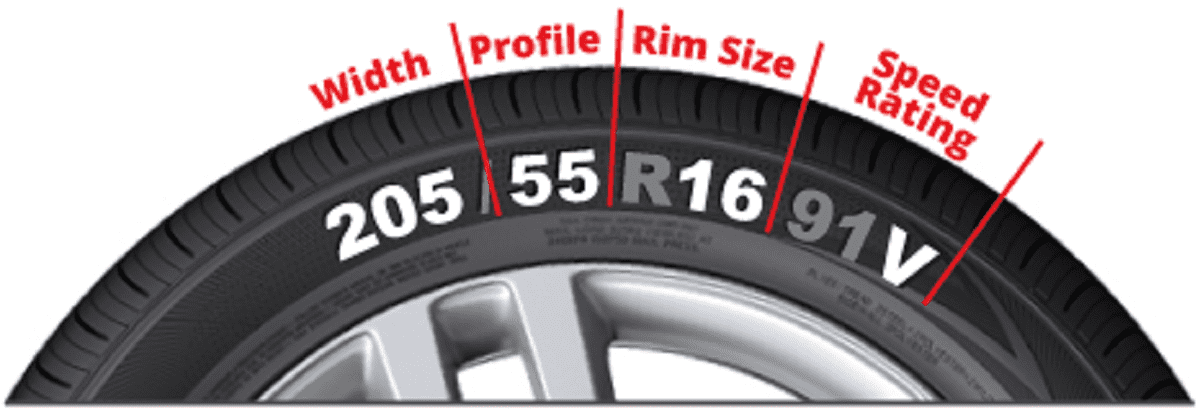 This tire will have a diagonal carcass type.
This tire will have a diagonal carcass type.
Tires marked B are practically non-existent and rarely produced - these are tires with a diagonal carcass and tread reinforcement with special belts. This design is called Belted and is a rarity in car shops and tire centers.
The letter Z can be added to the letter designation R - as in this example 225/45ZR17. Now it is rare to find tires with such a designation, but nevertheless, the speed index is displayed in this way - Z-speed rated.
The speed index can only appear after the numbers indicating the percentage of height to width ratio and after the letter R, indicating the type of internal construction of the tire - but this is rarely used, since 1991 the speed index marking has been indicated in the service description.
After the letter R (D or B), manufacturers indicate a number that indicates which rim diameter this tire fits. For example, in the marking P225 / 45R17 91S number 17 means that this rubber is intended for a disk with a diameter of 17 inches.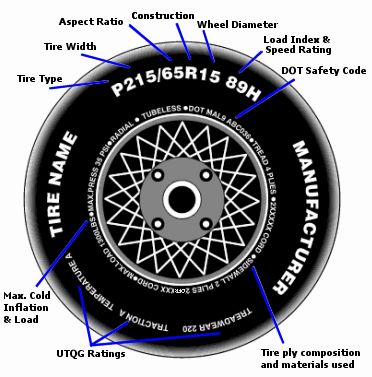
The numerical designation can be from 8 to 28 - what number, this should be the size of the disk to install this particular tire on it. Common designations are 8, 10, 12, 13, 14, 15, 17, 18, 19, 20, 23, 24, 26, 28. This size range allows you to choose tires for cars and trucks, minivans, vans, SUVs.
Less common but still used sizes are 14.5, 15.5, 17.5 and 19,5. These dimensions are suitable for heavy-duty trucks and covered vans.
Sometimes the size markings are given in millimeters, for example - 190/65R390. Such a system is called millimetric. Michelin uses this system for the TRX range.
Michelin also uses its own original integrated tire labeling system called Michelin PAX. Under this system, tire dimensions and rim dimensions are indicated in millimeters. For example - 235 / 710R460A 104T, here 235 is the size of the profile width in millimeters, 710 is the outer diameter of the tire in millimeters, 460A is the rim diameter, the letter designation A means that the tire has asymmetric beads, with different diameter sizes.